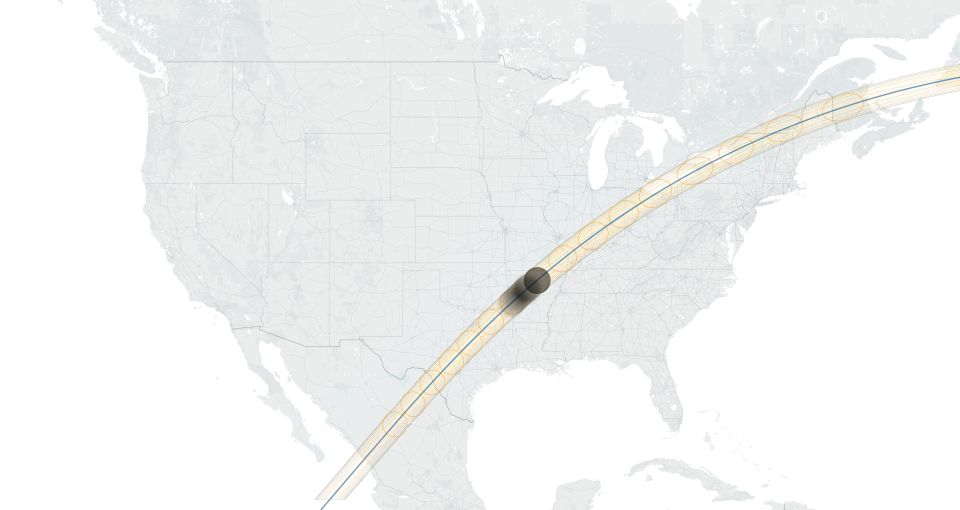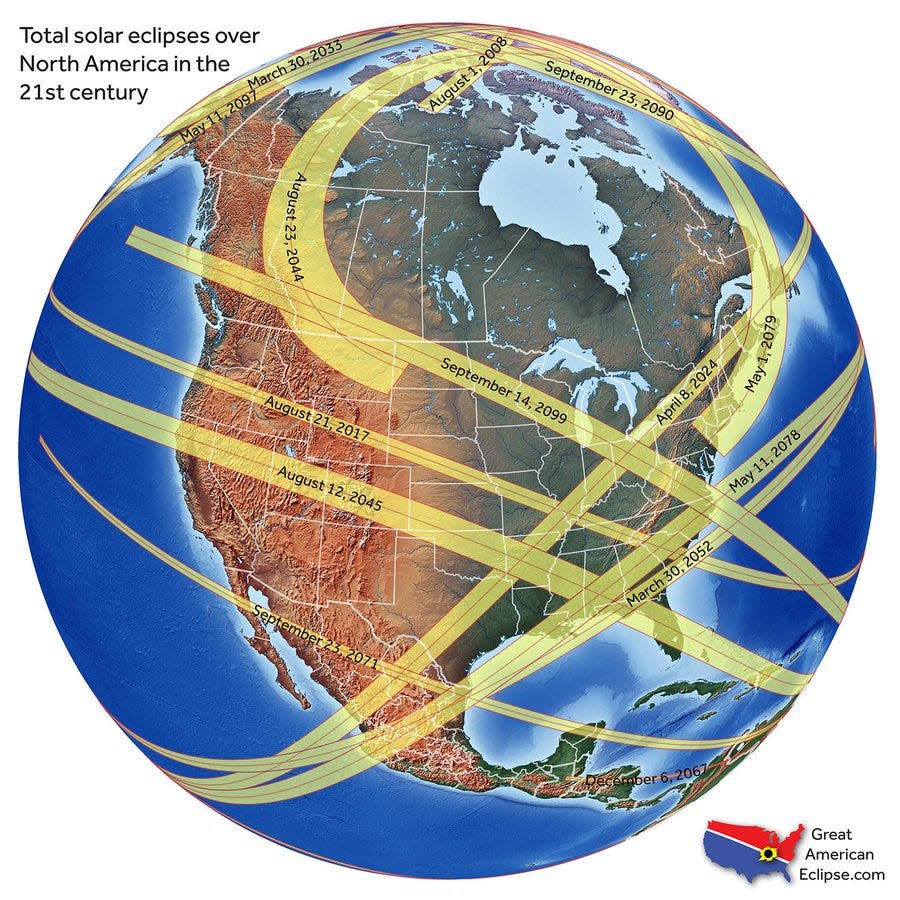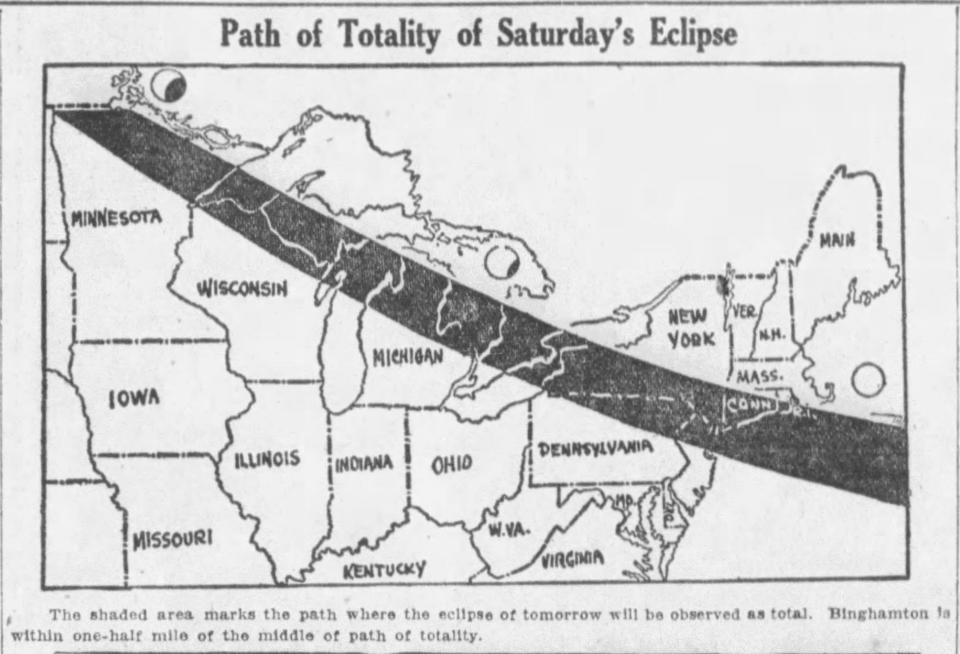When will the next total solar eclipse happen in Wisconsin after 2024?
The April 8 "Great American" solar eclipse, perhaps the most anticipated astronomical event of the year, is almost here.
For a few minutes Monday afternoon, the eclipse's peak will briefly cast nighttime-like darkness over a 115-mile-wide, southwest-to-northeast path across North America as the moon passes in front of the sun. Millions of residents in 13 states stretching from Texas to Maine will be under this "path of totality" and able to experience the total solar eclipse.

The rest of the U.S., including Milwaukee and Wisconsin, will experience a partial solar eclipse, the peak effects of which are said to resemble an overcast day. However, like in 2017, tourists living in partial eclipse areas will travel en masse to cities on the path of totality to fully experience this uncommon astronomical event.
After all, the continental U.S. won't experience another total solar eclipse for 20 years. Unfortunately, Wisconsin is not on the path of totality for that one either.
But, if you're young or lucky enough to live to the end of the century, you may be able to see a total solar eclipse from Milwaukee in 2099.

When is the next total solar eclipse in the U.S.?
After Monday, the lower 48 states won't see another total solar eclipse until Aug. 23, 2044. However, only three states ― Montana, North Dakota and South Dakota ― will be on its path of totality. According to NationalEclipse.com, most Western and Midwestern states, including Wisconsin, will see a partial eclipse during this event.
What will a ticket to @WaltDisneyWorld cost on August 12, 2045, when a six-minute total solar eclipse crosses directly over the park? pic.twitter.com/LQgC09SiaL
— National Eclipse (@NationalEclipse) March 25, 2024
Thankfully, you won't have to wait another 20 years for the next total solar eclipse, though. Less than a year later on Aug. 12, 2045, another one will grace the skies. Its path of totality will touch South America, the Caribbean and 15 U.S. states from California to Georgia, NationalEclipse.com says. Wisconsin and most of the Midwest will again see a partial eclipse.
Perhaps of interest to Disney World fans, the 2045 eclipse will travel right over Orlando ... better book your hotel now.
When will Wisconsin be on the path of totality for a solar eclipse?
The next time Wisconsin will be on the path of totality for a total solar eclipse will be Sept. 14, 2099, said Dr. Jean Creighton, director of the University of Wisconsin-Milwaukee's Manfred Olson Planetarium.
Milwaukee and much of the rest of the Midwest, including parts of Minnesota, northern Illinois, northeastern Indiana, southwestern Michigan and much of Ohio, will be on the path, according to NASA.
When was the last time Wisconsin was on the path of totality?
Wisconsin was last on the path of a total solar eclipse 70 years ago. Northwestern portions of the state, including Spooner and St. Croix Falls, experienced totality on June 30, 1954.
Milwaukee experienced a partial solar eclipse, where the moon covered about 91% of the sun at the eclipse's peak. The April 8, 2024, event will be similar; the moon will cover 89% of the sun in Milwaukee.

The northern tip of Wisconsin, including Bayfield, Ashland and Door County, experienced totality on Jan. 24, 1925. Milwaukee saw a partial eclipse where nearly 96% of the sun was covered by the moon at the eclipse's peak.
Milwaukee hasn't seen totality since the Middle Ages, Creighton said. The city hasn't been on the path of a total solar eclipse since May 16, 1379.
More: Where is the closest city to Milwaukee to view the 2024 total solar eclipse?
This article originally appeared on Milwaukee Journal Sentinel: When is the next solar eclipse in the U.S. and Wisconsin after 2024?

